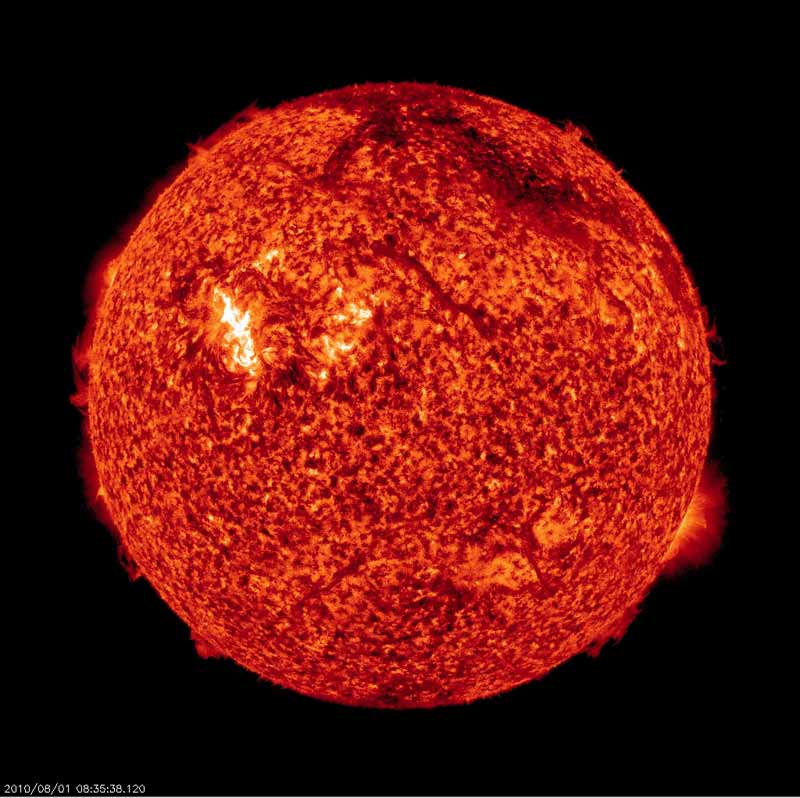Spectacular Northern Lights Show Signals Sun Is Waking Up

Skywatchersat high latitudes could be in for a spectacular treat of northern lights, theaurora borealis, Tuesday and Wednesday: After a relatively quiet stretch, itappears the sun is ramping up its activity.
Thesun's surface erupted early Sunday, blasting ?tons of plasma (ionizedatoms) into space. These atoms are headed toward Earth and could create astunning light show in the process.
"Thiseruption is directed right at us and is expected to get here early in the dayon Aug. 4th," said Leon Golub of the Harvard-Smithsonian Center forAstrophysics. "It's the first major Earth-directed eruption in quite sometime."
Thesolar eruption, called a coronal mass ejection, was spotted by NASA's Solar Dynamics Observatory , which captures high-definition views of the sun ata variety of wavelengths. SDO was launched in February and peers deep into thelayers of the sun, investigating the mysteries of its inner workings.
"Wegot a beautiful view of this eruption," Golub said. "And there mightbe more beautiful views to come if it triggers aurorae."
Viewsof aurorae are usually associated with Canada and Alaska, but even skywatchersin the northern U.S. mainland are being told they can look toward the northTuesday and Wednesday evenings for rippling "curtains" of green andred light.
Whena coronal mass ejection reaches Earth, solar particles stream down ourplanet's magnetic field lines toward the poles. In the process, the particlescollide with atoms of nitrogen and oxygen in the Earth's atmosphere, which thenglow, creating an effect similar to miniature neon signs.
Get the Space.com Newsletter
Breaking space news, the latest updates on rocket launches, skywatching events and more!
Theinteraction of the solar particles with our planet's magnetic field has thepotential to create geomagnetic storms, or disturbances in Earth's magnetosphere. And while aurorae arenormally visible only at high latitudes, they can light up the sky even atlower latitudes during a geomagnetic storm.
Thesun's activityusually ebbs and flows on a fairly predictable cycle. Typically, a cycle lastsabout 11 years, taking roughly 5.5 years to move from a solar minimum, a periodof time when there are few sunspots, to peak at the solar maximum, during whichsunspot activity is amplified.
Thelast solar maximum occurred in 2001. The latest minimum was particularly weakand long- lasting. The most recent solar eruption is one of the first signsthat the sun is waking up and heading toward another maximum.
- Images: Hyperactive Sun
- Video - How Space Storms Wreak Havoc on Earth
- Sun's Strange Behavior Baffles Astronomers
Join our Space Forums to keep talking space on the latest missions, night sky and more! And if you have a news tip, correction or comment, let us know at: community@space.com.

Space.com is the premier source of space exploration, innovation and astronomy news, chronicling (and celebrating) humanity's ongoing expansion across the final frontier. Originally founded in 1999, Space.com is, and always has been, the passion of writers and editors who are space fans and also trained journalists. Our current news team consists of Editor-in-Chief Tariq Malik; Editor Hanneke Weitering, Senior Space Writer Mike Wall; Senior Writer Meghan Bartels; Senior Writer Chelsea Gohd, Senior Writer Tereza Pultarova and Staff Writer Alexander Cox, focusing on e-commerce. Senior Producer Steve Spaleta oversees our space videos, with Diana Whitcroft as our Social Media Editor.









